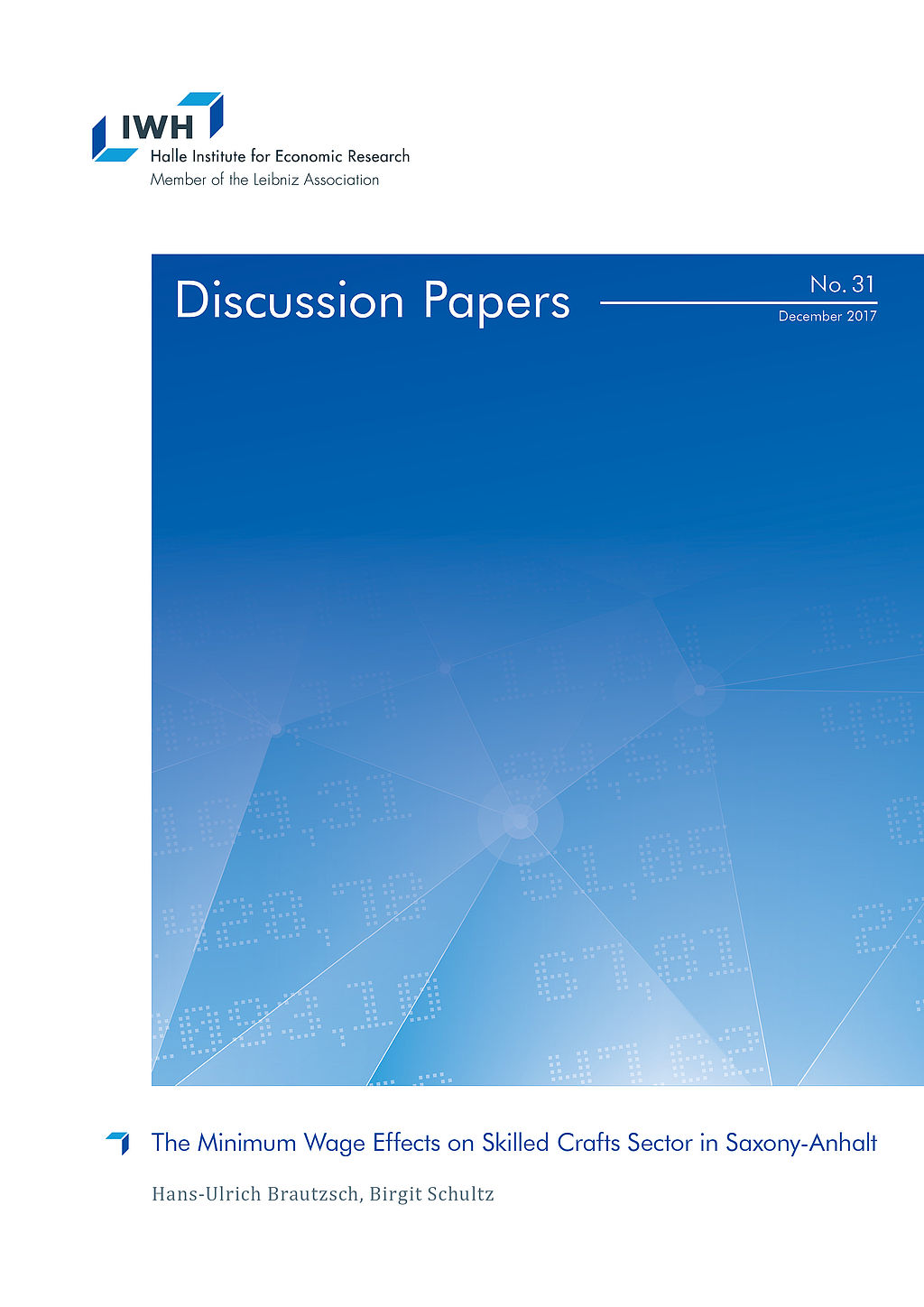
The Minimum Wage Effects on Skilled Crafts Sector in Saxony-Anhalt
in: IWH Discussion Papers, No. 31, 2017
Abstract
This paper examines the effects of the minimum wage introduction in Germany in 2015 on the skilled crafts sector in Saxony-Anhalt. Using novel survey data on the skilled crafts sector in Saxony-Anhalt, we examine three questions: (1) How many employees are affected by the minimum wage introduction in the skilled crafts sector in Saxony- Anhalt? (2) What are the effects of the minimum wage introduction? (3) How have firms reacted to wage increase? We find that about 8% of all employees in the skilled crafts sector in Saxony-Anhalt are directly affected by the minimum wage introduction. A difference-in-difference estimation reveals no significant employment effects of the minimum wage introduction. We test for alternative adjustment strategies and observe a significant increase of output prices.

A Federal Long-run Projection Model for Germany
in: IWH Discussion Papers, No. 11, 2012
Abstract
Many economic decisions implicitly or explicitly rely on a projection of the medium- or long-term economic development of a country or region. In this paper, we provide a federal long-run projection model for Germany and the German states. The model fea-tures a top-down approach and, as major contribution, uses error correction models to estimate the regional economic development dependent on the national projection. For the medium- and long-term projection of economic activity, we apply a production function approach. We provide a detailed robustness analysis by systematically varying assumptions of the model. Additionally, we explore the effects of different demographic trends on economic development.

Vergleich der Weiterbildungsaktivitäten von Arbeitslosen und Vollzeiterwerbstätigen
in: IWH Discussion Papers, No. 9, 2007
Abstract
Many empirical studies consider either training activities of the unemployed or training activities of the employees in Germany. However, a comprehensive comparison of both groups is missing. The paper closes this gap. Using data of the latest time use survey (Zeitbudgeterhebung) of the Federal Statistical Office, the amount of training is compared for both groups. Furthermore, it is described which types of activities are made use of in particular. Heterogeneity due to different relevant socioeconomic characteristics in the two groups is eliminated by the appliance of a matching procedure. Findings demonstrate that only 49% of the unemployed persons participate in any kind of training activities off the job. In case of the full-time employment 59 % would take part. Concerning the average expenditure of time per week the difference turns around, i.e. the expenditure of time is higher during unemployment. However, a high proportion of the training activities of the unemployed falls upon general training, e.g. by reading books or watching TV. Furthermore, the result is driven by a different potential of time that can be used for training activities off the job. Relating to this potential of time the amount of training activities is still lower during unemployment.



